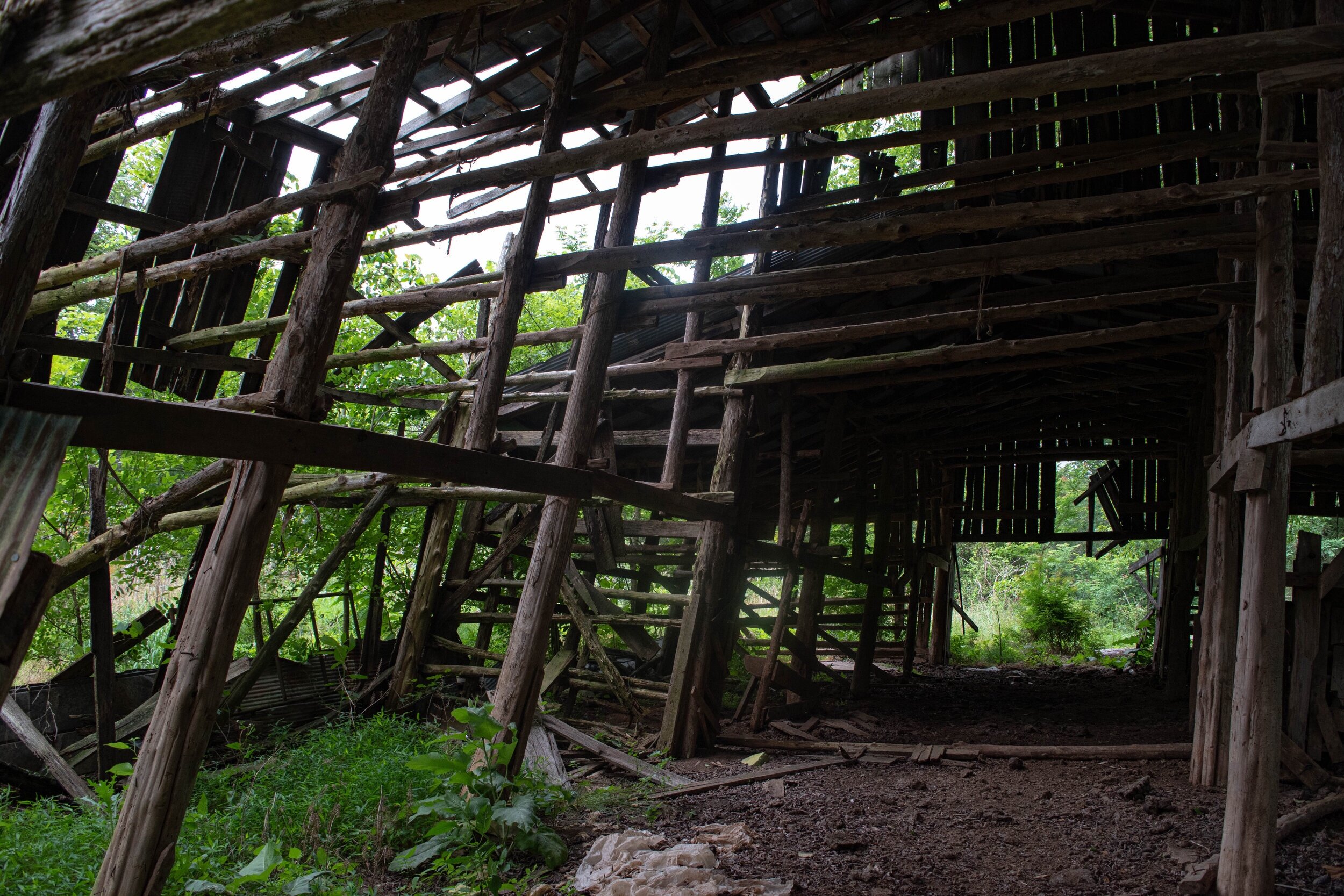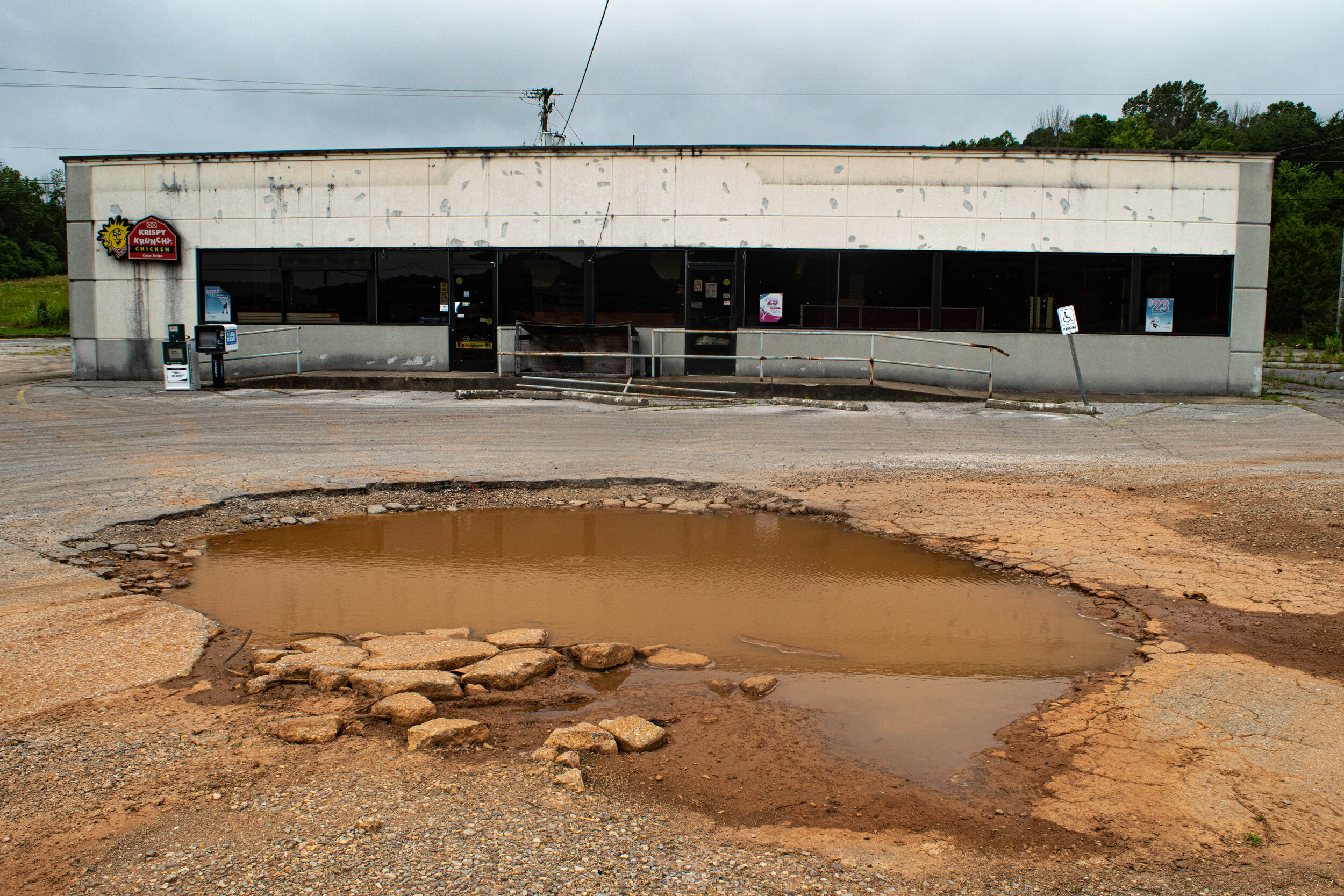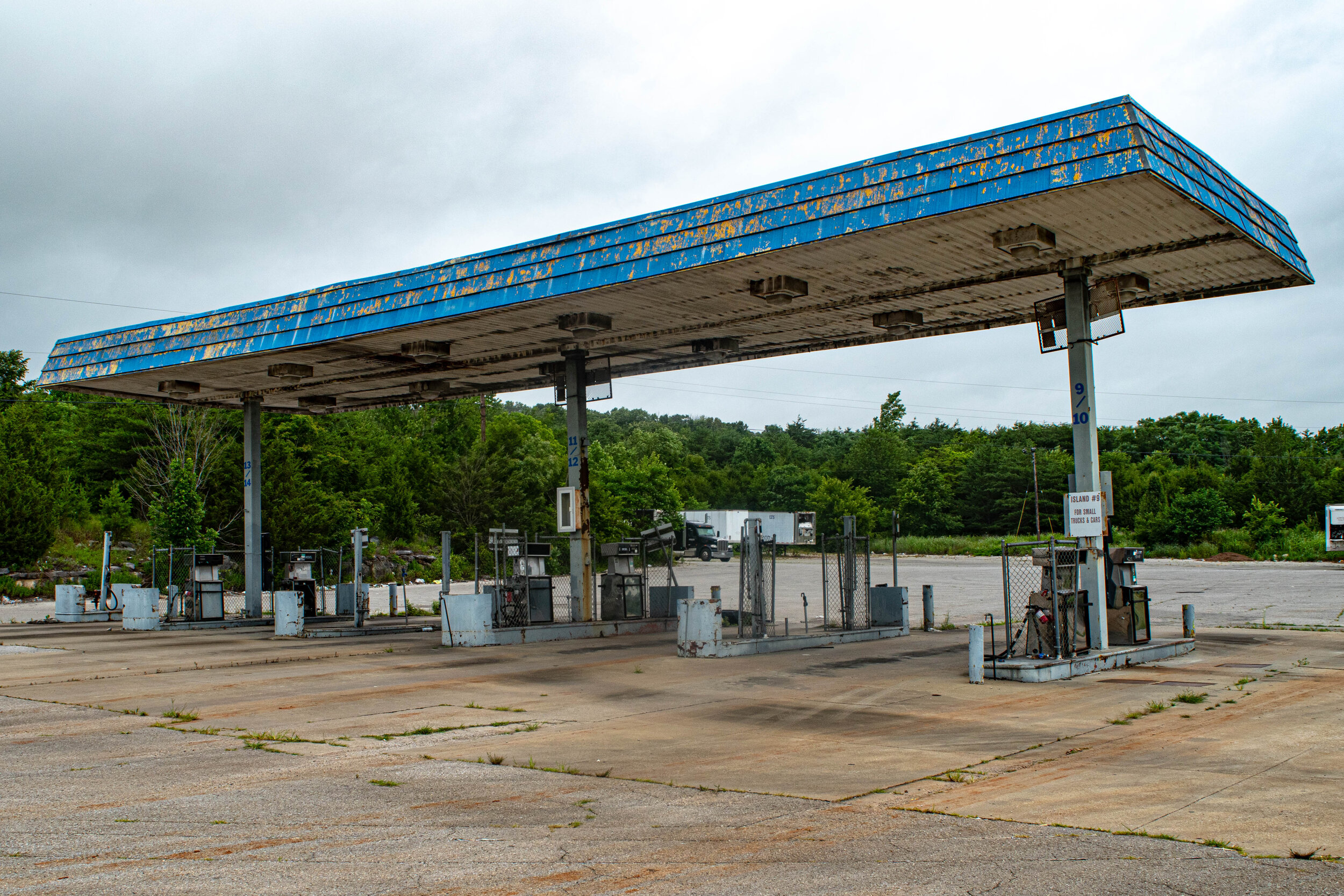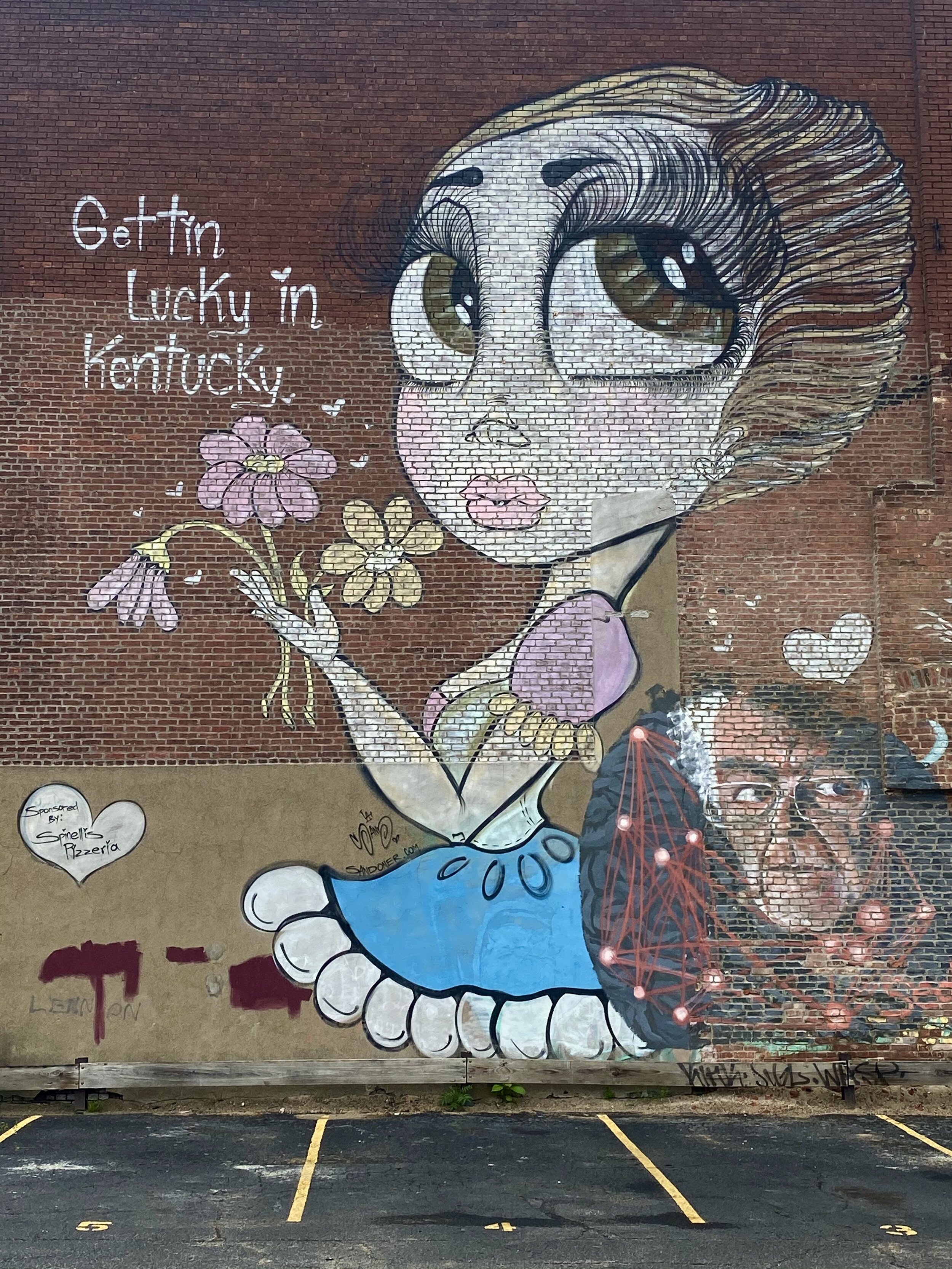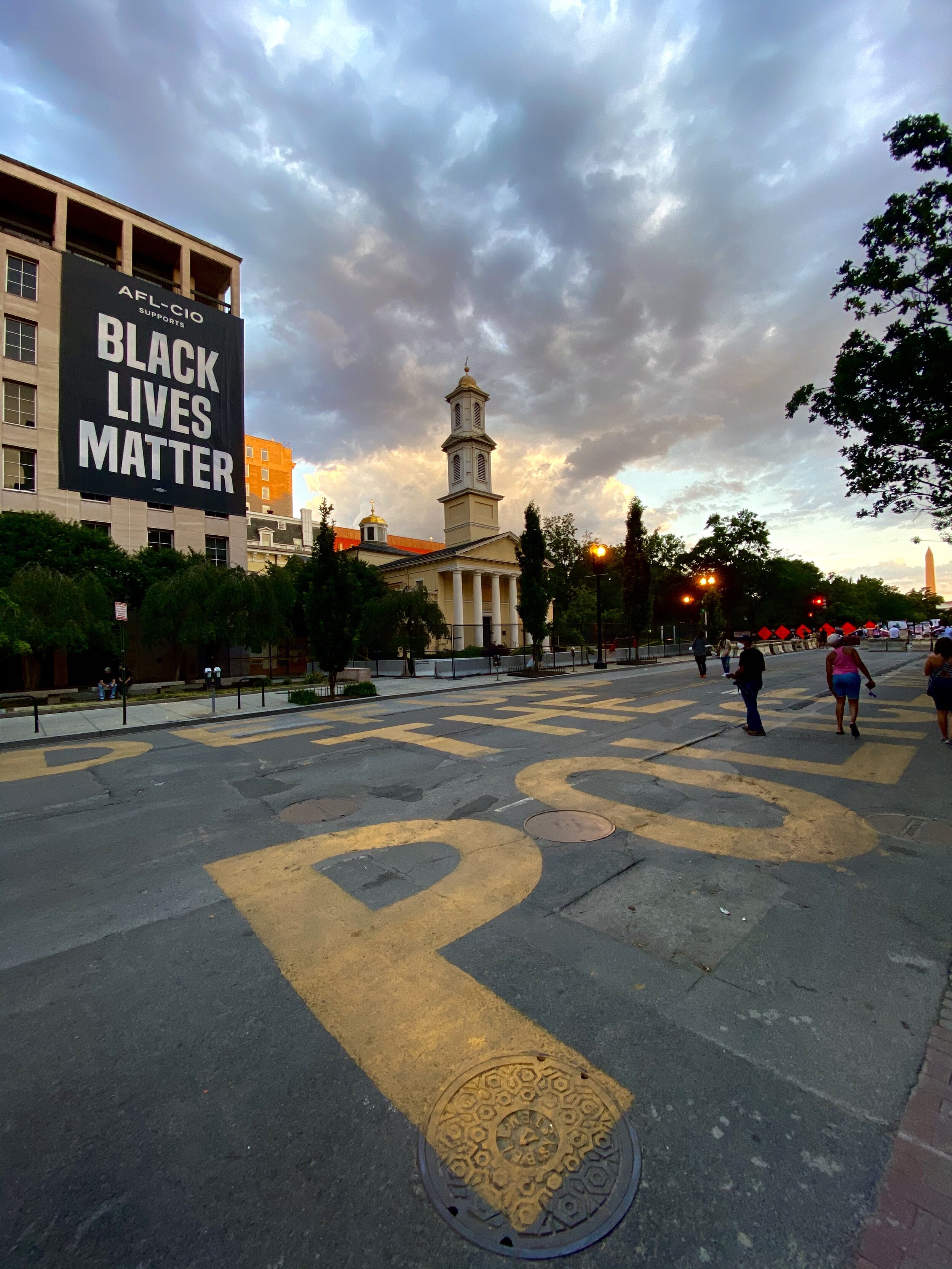A Road Less Travelled
In the words of Willie Nelson, ‘On the road again, I just can’t wait to get on the road again….’
The excitement was brewing in our household. Lockdown restrictions had been eased, and planning was in the works for a road trip through six iconic US States. The high-stake negotiations on who was sitting where in the car were underway, and the debate on which fast-food outlet we would eat at for the first night was worthy of an award. The itinerary was set, but loose around the edges, keeping it open for those spontaneous moments that would surely crop up. The bags, including the all important face masks and hand sanitizer were packed, the car was full to the brim with pillows and blankets, the movies were downloaded onto iPads, and the anticipation levels were high. We were off and we were excited!! We were back doing what we had set out to do when we moved to America - travel, become a little more educated, and have adventures along the way. From America’s oldest history of 1st settlements, to America’s newest history of statue removal and protest camps, to natural beauty and fun adventures, it was an epic road trip though many different types of America. Read on though this photographic journey to learn more.
Memphis, Tennessee - Mammoth Caves, Kentucky. June 26, 2020.
We’ll start in Memphis where these images set the scene for the type of trip we had. On one hand, we saw so much natural beauty. The image below is of the Shelby Farms Greenline , a transformed unused railroad line now bike/walking trail that connects much of Memphis, and the trail that I walk on most days. On the other hand, we witnessed history in the making. The ‘I Am A Man’ sculpture and plaza is an American Civil Rights Memorial located in Memphis, paying tribute to the members of the pivotal 1968 Sanitation Workers’ Strike and the legacy of Dr. Martin Luther King, Jr. ‘I Can’t Breathe’ of course represents the current ‘Black Lives Matter’ Movement, started in 2013 in response to the acquittal of Trayvon Martin’s murderer, and which gained momentum after the recent death of George Floyd.
Shelby Farms Greenline, Memphis
‘I Am A Man’ Sculpture and Plaza, Memphis
Photographed in Memphis
As we departed Memphis on a Friday afternoon, the seats were finalised (for now) and a decision had been made on where we were going to eat, and that is no easy feat! There are around 50,000 chains of fast-food outlets in the US, with a total of almost 200,000 restaurants (or up to 300,000, depending on what you read). That’s A LOT of choice - and also a lot of rubbish, with very little of it recycled, sadly. Of course, we don’t help the cause when we buy into the system, but hey, it’s a road trip, and we’re in the US, so when in Rome… The winner, if you’re wondering, was Chick-fil-A. Started in Georgia in 1946, it’s now the most popular fast-food in the US, not only because its chicken is actually pretty good and the staff are the friendliest I’ve come across at a US fast-food outlet, but probably also because their corporate purpose is:
‘To glorify God by being a faithful steward of all that is entrusted to us, and to have a positive influence on all who come into contact with Chick-fil-A.’
They’re also closed on a Sunday to give people the opportunity to attend Mass. Now that is something you would rarely see in Australia.
We stayed at the Horse Cave Holiday Inn Express that evening - a cookie cutter, just off the highway, comfortable enough, affordable, does the job kind of place. Whilst these types of places lack any soul whatsoever, and they’re not designed to inspire your next masterpiece, they’re great when you’re a family of six and just need a bed, shower and toilet x 2 rooms.
Due to COVID, the Holiday Inn weren’t offering their inclusive breakfast. Lucky for us though, as it meant we were able to experience the Amish Farmwald Dutch Bakery. Good old fashioned bakeries have been hard for us to find in the the US, so we were very excited to come across homemade goodies here. The bacon, egg, hash brown, sausage and cheese roll below was perhaps the best I’ve ever experienced (not that I usually eat that many of them!) It also gave us an opportunity to talk to the kids about the Amish way of life, where family is priority second to God; which values humility, community and a quiet reserved personality; and which prefers the use of bicycles and horse-drawn carriages over cars.
The Mammoth Cave National Park consists of rolling hills, deep river valleys, and the worlds longest known cave system. It’s also home to a rich diversity of plant and animal life, earning it the title of UNESCO World Heritage Site and International Biosphere Reserve. Because it is so large, 82.63 square miles, it’s easy for the GPS to direct travelers on the wrong route. Sure enough, we were on the ‘scenic drive’ to get to the caves. But I didn’t mind at all, because the drive through corn fields, farm houses and barns was reminiscent of a Hallmark movie, quite lovely. When we passed the abandoned building below, I couldn’t resist jumping out and taking a few snaps. As it turned out, the Mammoth Cave tickets were sold out for the day, but we were advised of some other caves to visit, so back to the town of Horse Cave we went.
As we waited for the tour of the Hidden River Cave, we ventured to the antique store below. What a find! It was worthwhile visiting for the stunning colourful glassware alone.
There were also some controversial vintage pieces, as you’ll see below. It was educational for me to read up on these objects in this article Confronting My Racist Object, and as stated in the article:
‘The items have value because they force us to not only confront the ubiquity of racism – from government policy to kitchen tables – but also to talk about the many ways that’s experienced, or not experienced by some of us, often for many years or an entire lifetime.
Objects are also tangible representations of stories. They are one of the many ways that narratives about race and ethnicity are expressed, told and understood.
“These objects were made by everyday Americans making money,” Dr. Pilgrim said. And, he added, they had a purpose: “The millions and millions and millions of everyday objects that belittled African-Americans were made to support the racial hierarchy in the United States.”’
We eventually made it into a cave, this one boasting ‘the world's longest underground swinging bridge’, which was quite impressive really!
At the Horse Cave freeway entrance, sits this abandoned service station, but you see similar scenes throughout the US. They’re in decline for various different reasons. According to this article on America’s gas stations:
‘The decline of cigarette smoking, the rise of GPS-enabled smartphones, the development of more fuel-efficient vehicles, and other factors, are forcing gas stations and convenience stores to rethink how they draw customers in. Smartphones enabled with maps means fewer people are stopping in convenience stores asking for directions or buying maps. Americans smoke fewer cigarettes, which were an important source of sales for convenience stores. Cars have become more fuel efficient and Americans are slowly turning toward electric and hybrid vehicles, which don’t require as much, or any, gasoline.’
They also make interesting photographic stops. Jeff Brouws has produced a wonderful photographic book titled Twentysix Abandoned Gasoline Stations. There are probably hundreds more out there documenting this intriguing phenomena.
Mammoth Caves, Kentucky - Louisville, Kentucky. June 27, 2020.
Louisville, Kentucky looks like a really interesting, creative city, in normal times. The Slugger Museum and Factory celebrates all things baseball, makes the famous ‘Louisville Slugger’ bat, and also boasts the world’s largest ‘Big Bat’ at 120 feet!
The city also houses the Muhammad Ali Center. Whilst we weren’t able to visit the Museum due to COVID, it was educational learning about the story of him losing his 1960 gold medal, via the Smithsonian Channel:
‘A young Muhammad Ali returned from the Olympic Games a champion in 1960, only to be victimized by bigotry in his segregated home city of Louisville when he was turned away from a restaurant that didn't serve African Americans. Disillusioned, he threw his gold medal off the Second Street Bridge and into the Ohio River. This dramatic story appears in Ali's autobiography, but can we prove any of it is actually true?
The champ's own brother recalls that fateful day in this 1.33min video:’
In Louisville, there’s interesting murals, Bourbon distilleries, Kentucky Fried Chicken, and of course the most famous horse racing event in the US, possibly the world, The Kentucky Derby, with a 2019 prize pool of $3 million. With a horse racing loving husband, a stop off at host racecourse Churchill Downs was a must. There was racing taking place, but due to COVID, no crowds were allowed, so whilst he toured the Museum, the kids and I took a drive around the neighbourhood. Like much of the contrasting, diverse US I’ve discovered, the neighbourhood that hosts one of the richest horse races in the world was dilapidated, and riddled with police vehicles due to a store robbery that had just taken place. It certainly wasn’t what we expected.
A couple of the fun murals in Louisville:
But we weren’t there in normal times. The Louisville that we mostly experienced, was one that was a city smashed, boarded up, and reeling from the recent riots. Now a household name in the US, Breonna Taylor was killed by police in Louisville on March 13, 2020, in a police bust gone wrong. Read more about it in this NY Times Article. Protest demonstrations, which unfortunately became violent, started in the city on May 28, in solidarity with the protestors in Minneapolis after the killing of George Floyd.
Beautiful architecture, boarded up sadly
Even the the gold ‘Statue of David’ (commissioned by 21c Museum to integrate art into everyday life) is boarded up
Charles Farnsley, former Louisville Mayor - perhaps wondering what is going on in his beloved city
‘Solidarity with Minneapolis’
Small businesses trying to save their livelihood
Liam wondering what it was all about
Four weeks had passed since the initial protesting and subsequent riots when we visited Louisville, and we discovered mostly peaceful protestors that had set up camp at Jefferson Square downtown. We toured around it for 15 minutes in order to help educate the kids about the issues at hand. Thankfully we moved along quickly, as one hour later there was a fatal shooting in the park. Killed was 27-year-old Tyler Gerth, a budding photographer who had become a vocal supporter of the protests.
Once we saw the ‘big’ guns, we realised it was probably time to leave (see the rest of my family on the left hand side of the image)
Vandalism of the King Louis XVl statue. (As a tribute to Louisville's connection to the French, Louisville's sister city in France, Montpellier, gave Louisville a statue of King Louis XVI of France, the namesake of Louisville.)
Whilst we didn’t really get to experience the Louisville you see in the brochures, we certainly experienced another side to the city that was both educational and adventurous!
Now for a change of pace.
Louisville, Kentucky - New River, West Virginia. June 28 - 30, 2020.
Scenery, scenery, scenery! No wonder John Denver wrote about West Virginia being ‘Almost Heaven’. With the Appalacian Mountains, multiple lakes, trees, and countryside, I have to agree with him. Apparently West Virginia is the northernmost southern state and the southernmost northern state in the US - I’m not sure, but I do know that it was simply breathtakingly beautiful.
We stayed at the ACE Adventure Camp, near one of the oldest rivers in the world, ironically called New River, estimated to be between 10 and 360 million years old, and the only North American river to flow north. I booked ACE specifically for the inflatables on the lake, as I knew the kids would love it! And they did, we all did. A full day on the lake, followed up with a spa, campfire and s’mores was a near perfect day for all. And for you Aussies reading this, s’mores are the delicious campfire treats made by melting a marshmallow over the fire, then squeezing it between two savory Graham crackers and a Hershey’s milk chocolate square. It’s the typical American combination of sweet and savoury that sounds strange to non-Americans -think bacon and maple syrup on pancakes, peanut butter and jelly (jam) sandwiches - that just work, and one is never enough!
The next morning we traveled out onto the New River for a spot of whitewater rafting with West Virgina Adventures, a small, boutique company that we would highly recommend. Once again, the scenery was majestic, and whilst we couldn’t do the most intense rapids as we had children under the age of 12, we still experienced some smaller ones that gave us enough of a thrill to want to do it again.
New River, West Virginia - Washington D.C., Maryland. July 30, 2020.
We debated driving all the way to DC, knowing that the museums would be closed due to COVID. With so much uncertainty in the air around travel, we just don’t know what further exploration we will get to do in our time here in the US, so we thought it worth driving there to at least see the monuments. But we saw much more than that. Like Louisville, much of Washington DC was still boarded up due to the protests and riots, and everything seemed to be closed. We couldn’t get very close to most of the monuments, but viewed them from a distance. We were able to view the Black Lives Matter Plaza opposite the White House, including the surrounding fences and walls covered with ‘Black Lives Matter’ paraphernalia, as well as St John’s Church, set on fire during the protests, and made more famous from President Trump's photo opportunity. It was a sombre, reflective hour with the kids - and one that I think they’ll remember for the rest of their lives.
To set the scene, this video compiled by the Washington Post documents the activities and timeline of that now famous photo op (12 min):
And following is a short video on the making of the ‘Black Lives Matter’ mural (I min):
These are some of my photos from the White House and surrounding area:
In the background, the toilet block in Lafayette Square that was set on fire by protesters
St John’s Church, and the ‘Defund the Police’ mural that was added by activists after the ‘Black Lives Matter’ mural had been painted by the City. The Washington Monument can be seen in the background.
St John’s Church, now boarded up and fenced in
The enormity of the mural can be seen here. The plaza is now a tourist destination with t-shirt sellers and food trucks replacing protestors.
We also saw some creative and colourful boards from some of the businesses in the surrounding area.
And a trip to Capital Hill gave us the opportunity to discuss with the kids the US Government system, along with terms like left and right leaning, and far left and right.
Washington DC, Maryland - Richmond, Virginia. July 1, 2020.
We planned to stop at Richmond - one of the oldest cities in the US - for lunch on our way through to Williamsburg. As we approached, and passed a sign to a General Stonewall Jackson memorial, we had a discussion about how the term ‘stonewall’ originated. As Vocabularly.com describes:
‘It was coined as a nickname for Confederate General Thomas J. Jackson, who was described as "standing like a stone wall" as the enemy approached. It was originally a noun, meaning "an act of obstruction."‘
We also discovered that his statue in downtown Richmond was being removed that day. The debate about the existence of Confederate statues has been going on for years in the US. As Time Magazine writes in this article Confederate Statues Are Being Removed Amid Protests Over George Floyd's Death. Here's What to Know:
‘In the last few years, amid the rise of the Black Lives Matter movement and the 2015 mass shooting of nine African Americans at the Mother Emanuel church in Charleston, S.C., a debate was sparked about whether the statues should remain in public spaces. The statues became the centerpiece of protests, most infamously the “Unite the Right” rally in Charlottesville, Va., in 2017, during which white nationalists gathered to protest the city’s plan to remove a statue commemorating Confederate General Robert E. Lee, a protest that ended with one person killed and dozens injured.’
(The Time "Unite the Right" rally article referred to above is a brilliant photographic piece worth looking at just for the striking images.)
I also read that City Governments are deciding to take down statues in the interests of public safety, after serious injuries have occurred when the public have tried to take them down themselves. The Councils plan to store the statues for now, and work out what to do with them later, with some being moved to Conference cemeteries.
I jumped at the chance to see this historic moment and convinced the family that we needed to linger after our lunch! I took a few photos which you can see on my Instagram page, but here is some video footage (28 secs) I took not long before the statue was lifted off. My adrenaline was pumping and it was certainly a moment I’ll never forget. It felt like a very safe environment, the majority of the crowd had masks on, and people were giving everyone plenty of distance in the COVID environment. The heavens opened not long after I took this, so we decided to leave and continue on our way, happy that we’d experienced a once in a lifetime event.
Richmond, Virginia - Williamsburg, Virginia. July 1, 2020.
Changing pace again, the next component of our trip focused on America’s oldest history. Driving through Virginia, we were once again greeted with beautiful scenery. The picture below is just a quick snapshot from the car and doesn’t do it justice, but perhaps gives a feel of the leafy environment. We could see why the English decided that Virginia would be a suitable spot for their new Colony.
The Greater Williamsburg area consists of Jamestown, Williamsburg and Yorktown. Under normal circumstances, you could probably spend 4 or 5 days in the area, there is just so much to do, and I suspect it’s a place where many school camps go. In Williamsburg is the preserved Colonial Williamsburg, a 301 acre living-history museum portraying life in the 18th century with 40+ landmark sites & tours. . If you’re interested, here is a brief history on the town from the City of Williamsburg website :
Williamsburg was founded as the capital of the Virginia Colony in 1699. The original capital, Jamestown was the first permanent English-speaking settlement in the New World founded in 1607. Colonial leaders petitioned the Virginia Assembly to relocate the capital from Jamestown to Middle Plantation, five miles inland between the James and the York Rivers. The new city was renamed Williamsburg in honor of England's reigning monarch, King William III. Williamsburg celebrated its 300 th Anniversary in 1999.
Williamsburg was one of America's first planned cities. Laid out in 1699 under the supervision of Governor Francis Nicholson, it was to be a "new and well-ordered city" suitable for the capital of the largest and most populous of the British colonies in America. A succession of beautiful capitol buildings became home to the oldest legislative assembly in the New World. The young city grew quickly into the center of political, religious, economic and social life in Virginia.
Williamsburg also became a center of learning. Famous political leaders emerged from the College of William and Mary, (which had been founded in 1693), such as Presidents Thomas Jefferson, James Monroe, and John Tyler. The first hospital established in America for the care and treatment of mental illness was founded in Williamsburg in 1773. General George Washington assembled the Continental Army in Williamsburg in 1781 for the siege of nearby Yorktown and the winning of American independence.
The Capital was again moved in 1780, this time up the James River to Richmond, where it remains today. Williamsburg reverted to a quiet college town and rural county seat. In retrospect, Williamsburg's loss of capital city status was its salvation as many 18 th century buildings survived into the early twentieth century. The Restoration of Williamsburg began in 1926, after the Rector of Bruton Parish Church, the Reverend Doctor W. A. R. Goodwin, brought the city's importance to the attention of John D. Rockefeller, Jr., who then funded and led the massive reconstruction of the 18 th century city we see today. National attention soon focused on the restoration effort. During a landmark visit in 1934, Franklin D. Roosevelt proclaimed its main thoroughfare, the Duke of Gloucester Street, "the most historic avenue in America."
Today, Williamsburg is known internationally as the premier center for the preservation and interpretation of American colonial history: The Colonial Williamsburg Foundation; and as the home of the nation's premier small public university: The College of William and Mary.
Williamsburg was only just opening up to tourists again when we visited, so we decided it was safest just to have a drive around the beautifully preserved streets and soak it in that way. The images below (found online) show some of the many actors that work there to tell the Colonial stories of the past.
It’s worth mentioning our accommodation that night, in case you’re a big family reading this thinking of visiting the area. We stayed at the Westgate Historic Wiliamsburg Resort. For a 3 star hotel, I was really impressed with the period-specific family suite accommodation, with each suite being named after an important Colonial figure, and historical information provided. A lounge room and kitchen make all the difference when you’re a travelling family of six. There’s still the fighting over who is sleeping with who (generally our 4 kids share 2 double or queen size beds), but at least with a lounge room we can always threaten the couch.
It was a toss up the next morning whether to visit Jamestown or Yorktown, we only had time for one. Jamestown was the winner, and we (well, perhaps two of us) enjoyed learning some more at the Jamestown Settlement, the first permanent English settlement in North America.
Replicas of the original settlers’ ships in Jamestown (photo via the web)
Re-created Powhatan Indian village based on archaeological findings at a site once inhabited by Paspahegh Indians, the Powhatan tribal group closest to Jamestown, and descriptions recorded by English colonists (photo via https://www.historyisfun.org/jamestown-settlement)
We also learnt a little about Pocohontas and the Powhatans of Virginia, which helped bring to life for me the Disney movie ‘Pocohontas’ - the first Disney movie that was based on real history. Although as this article Does Disney’s Pocohontas Do More Harm Than Good states, there is much controversy surrounding the accuracy of the film, and many thought it should never have been made.
By this stage, the kids were bored, bored, bored with learning more history, and were much more interested in this little fella we stumbled across just near the original settlement:
Jamestown, Virginia - Washington, North Carolina. July 2, 2020.
Our next destination was Washington, North Carolina, and what a beautiful place! We visited friends who had moved from Memphis back here to their roots. I suspect it’s not a town that would usually be on an Australian’s US travel itinerary, so we felt very lucky to get to experience it first hand. Set on the Pamlico River, and the first town to be named after George Washington, it’s also known for its historic homes, arts and culture, and hospitality. Our friends have a boat, and the kids had an absolute ball experiencing some tubing. Turtle feeding was also a big hit the following morning.
Washington, North Carolina - Asheville, North Carolina. July 3, 2020.
Another long driving day, but from memory, the kids were pretty well behaved in the car! By this stage, they were used to the driving days, and had their routine down pat. The main issue we had was remembering where we had put the masks and sanitizer - essential at every stop!
Asheville, set in western North Carolina’s Blue Ridge Mountains, IS one of those towns that would be on many travel itineraries. It’s known for a vibrant arts scene and historic architecture, as well as the vast 19th-century Biltmore estate, which we visited last year on a road trip.
This visit, we spent more time in the surrounding stunning mountainside, and the vibrant downtown (well, as vibrant as a town can be in a COVID environment). I liked this novel way to make money, typewriter and all:
‘A poem, written for you - pick a theme, get a poem’:
He then presented it to the purchaser with a maneuver such as a handstand or backflip. Impressive!
On the Asheville Architecture Trail is the stunning Art Deco S & W Cafeteria seen below.
‘Douglas Ellington's bright and joyous detailing of the facade and interior of the S&W Cafeteria struck what he called at the time "a note of gaiety" appropriate for such a well-loved destination. Finished in 1928, this Art Deco gathering place, with its great arched windows, featured terra cotta panels topped by a parapet of tiles, green and blue. The building, currently used for events, is broadly considered to be Ellington's most refined Art Deco project. It listed on the National Register of Historic Places in 1976.’
There are many more architectural gems to be found in Asheville, a town that grew with an influx or tourists and new growth in the 1920s. It’s definitely a place I would love to spend more time in.
The kids appreciated a visit to the historic Mast General Store, where just about anything and everything was available, including an enormous array of candy:
And of course any ice cream shop is always a hit. This one with a more unique style of adding in the toppings:
The following day, July 4th, we took a drive along the spectacular Blue Ridge Scenic Loop and through its 12 tunnels:
We also visited Sliding Rock, a popular spot on the drive, just out of the quaint town of Brevard. The boys did the slide which dropped into exhilaratingly cold water at the end. The girls, well, we were feeling a bit lazy and chickened out. Someone had to take the photos and hold the towels!
Finally, it was time for some July 4th, American Independence Day action. Due to COVID, there were no official fireworks celebrations in Asheville, but that didn’t seem to stop anyone from doing their own backyard fireworks displays. Unlike most of Australia, fireworks are easy to obtain in the US. Different states have different rules and restrictions around the use of them, but it seems much of those are ignored. We relished our new roles as ‘fireworks chasers’ that evening, driving around Asheville looking for the next display, and we loved it!
And then it was time for the long drive home back to Memphis….
It was a 10 day, 2,159 mile (3,475 km) road trip through the six states of Tennessee, Kentucky, West Virgina, Maryland, Virginia and North Carolina. We experienced just a taste of what those places have to offer, but it was enough to get a feel for the vastly diverse nature of this country from the natural environment, the cities, the people, and the politics. Etched into our memory will be how close we were to a shooting at the Breonna Taylor Protest Camp in Louisville, the frolicking fun we had at various water activities, the time we had with genuine, warm & friendly Americans, and the both sombre and stirring emotions experienced in the places where we witnessed ‘Black Lives Matter’ events. Whilst COVID has restricted many of our plans for the limited time we have here in the US, what we’re being offered instead is a once-in-a-lifetime experience that we could never have dreamt about.
And that, dear readers, is worth writing home about.
You can view my other blog posts and website here: http://www.christinadayphotography.com
And my Instagram photos here: https://www.instagram.com/christinadayphotography/





